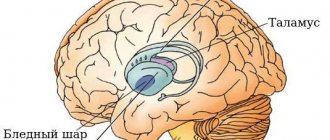Stuttering is a disturbance in the tempo, rhythm and fluency of speech associated with a pathological condition of the speech muscles. Expressed by frequent repetition of sounds or prolongation, speech interruptions. The causes are often stress, infections, mental retardation.
A speech defect leads to complex problems when interacting with peers, interferes with full communication, and causes considerable discomfort. Correcting the problem is possible in different ways, but with preschool children, the best option is a playful form. We invite you to learn about various exercises and replenish your didactic piggy bank.
Effectiveness of games for stuttering
For children under 7–8 years old, play is study, work, entertainment, simply put, the main form of perception of the world. While playing, the child expresses impressions and emotions from communication, the plots of books, and learns to build relationships with people.
In the case of stuttering, specially selected games and exercises give the following results:
- correct speech and behavior skills are consolidated in different life conditions;
- new speech skills are more easily transferred from the educational environment to life;
- the correct attitude towards oneself and others is formed.
In addition to speech training, classes help broaden your horizons, lift your spirits, and develop determination, organization, and intelligence.
Characteristics of types of convulsive speech
A 2-3 year old child may have non-convulsive stuttering, that is, not accompanied by vocal or respiratory spasms. Why is this happening? The process of forming active speech is underway, emotions are off the charts, and there is not enough vocabulary. Or the thought process is ahead of oral reproduction. From the outside it seems that the child is choking. It is noteworthy that if you ask such a child to calmly repeat what was said, speech will improve. A child who stutters will not succeed.
Logoneurosis can be permanent or depend on external factors: weather conditions, anxiety in front of strangers. The baby stumbles on individual sounds and syllables, and spasms occur in different parts of the word. There may also be pauses between individual phonemes and repetitions. The child becomes vulnerable, tearful, nervous, and is characterized by nervous tics. With the onset of stuttering, sleep is usually disturbed, nocturnal enuresis may occur, and appetite disappears.
Types of stuttering by types of symptoms:
- pathological congenital;
- neurotic;
- tonic, when vowels are stretched and pauses in words;
- clonic when individual syllables or letters are not pronounced;
- combined form.
Also, logoneurosis can be constant, unstable and cyclical (periods of rest and stuttering alternate). According to the degree, convulsive pronunciation can occur in mild, moderate and severe degrees. In the first case, symptoms appear when exposed to external factors. The middle course is characterized by the presence of stutters when speaking. The severe form occurs with the most pronounced symptoms of speech impairment, which is accompanied by psychological disorders.
Clinical signs of stuttering:
- the occurrence of seizures when speaking;
- in the process of communicating with others, there is an increase in facial expressions, frequent blinking, and the wings of the nose swell;
- when pronouncing words, pauses or repetitions of individual phonemes appear;
- There is shortness of breath, often children are in a hurry to say a word while inhaling.
Games and exercises for voice and pauses
The following complex will help develop the strength and purity of your voice:
- Sounds A and M. Inhale through the nose, pronounce sounds as you exhale;
- Combination of the sound M with vowels. First inhale, then on one exhale: MA, MO, MU, inhale again and another combination: MI, ME, WE. Repeat several times;
- N with vowels. Similar to the previous exercise;
- At one exit we pronounce ZZZZZZZZ - NNYNNNYN. In this case, Zh is the chest sound, Z is the middle sound, Hb is the upper facial sound;
- "True friend". Let the child imagine that his dog ran away. You need to call three times: once as if from afar, then - a little closer and at the end - very close;
- "Fragrance." Let the baby smell the scented handkerchief, and as he exhales say the word “good” - calmly, slowly, syllable by syllable. Then we make it more complicated: we say the phrases “very good”, “smells very tasty”. The same can be done with fruits, flowers and come up with any phrases to pronounce while exhaling;
- "Lullaby". Invite your baby to lull a baby doll, a doll, a soft toy and sing first quietly and then loudly “A-a-a-a-a”;
- "Hurts". We imagine that the tooth hurts and say “O-o-o-o”, alternating the loud and quiet version;
- "Cow". We imitate the moo of an animal, making MMMMMOOOO, varying the strength of the voice.
An always relevant and useful exercise for the development of vocal cords is alternating sounds. While exhaling smoothly after inhaling, we draw out the vowels in any order, for example, “aaaaaaaaaaaaaaaaaaaaaaaaaaaaaaaaaaaaaaaaaaaaaaaaaaaaaaaaaaaaaaaaaaaaaaaaaaaaaaaaaaaaaaaaaaaaaaaaaaaaaaaaaaaaaaaaaaaaaaaaaaaaaaaaaaaaaaaaaaaaaaaaaaaaaaaaaaaaaaaaaaaaaaaaaaaaaaaaaaaaaaaaaaaaaa.
Recommendations for parents
General recommendations:
- Protect your child from watching TV, playing on gadgets, and anything that overstimulates the nervous system.
- You can listen to classical music: the works of Mozart, Beethoven, Grieg, Chopin have a positive effect on the child’s psyche.
- Try to spend more time outdoors with the whole family; visiting the zoo and other activities that delight your child will be useful.
- Do not interrupt classes, regardless of the dynamics. Avoid long breaks.
The prognosis for the neurotic form of stuttering is positive. It is more difficult to correct a pronunciation defect due to a genetic type of pathology or other congenital cause. The older the child, the more difficult it is to treat logoneurosis. The neurotic form is based on a strong traumatic experience; such a disorder manifests itself sharply. Speech activity decreases, logophobia appears with fixation on a difficult sound, and convulsions of a respiratory-vocal nature appear.
Features of neurosis-like pathology include increased speech activity; the child treats stuttering uncritically or does not notice it. Speech is inexpressive, monotonous, fast. Weak facial expressions and motor skills and illegible handwriting are noted. Increased clinical manifestations are observed with fatigue, increased speech load, and are characterized by a constant non-cyclical course.
Non-therapeutic methods for correcting speech impairment:
- periodic monitoring by specialists;
- correction of social circle among peers;
- avoid emotional stress: both in everyday situations and during the game;
- do not traumatize the child’s psyche with literature that is inappropriate for their age or negative adult programs;
- continue training at home even after achieving results;
- train breathing through dance and music;
- do not interrupt the child’s speech, do not rush him, focusing on violations of tempo;
- exclude authoritarian education;
- accustom the baby to a daily routine and perform consistent actions;
- do not overload the child with educational materials (reading aloud, retelling).
If your baby speaks quickly, use a slower pace as a family. You can come up with a fairy tale with a suitable scenario, sometimes play a game of silence. You can clap your hands and march to the music. This contributes to the development of rhythm. Whispering is also a remedy for spasmodic stuttering.
For the development of speech breathing
The following games and exercises are necessary to improve diaphragmatic breathing, correct breathing rate and development of the speech apparatus:
- “We breathe well.” The child lies down and places his hand on his upper abdomen. Attention is concentrated on the depth of breathing. We inhale and exhale and notice how the tummy rises and falls;
- "Burst tire." We spread it in front of us like a large tire. As you exhale, slowly say SHSHSHH, while crossing your arms: the right one should be placed on the left shoulder and vice versa. The chest contracts easily as you exhale;
- "Ball". Similar to the previous one, but as you exhale you need to say FFFF;
- "Bug". Your arms should be raised to the sides and slightly pulled back. As you exhale, say ZHZHZH, while lowering your arms;
- "Pendulum". We sit down cross-legged, hands on the back of our heads. First, take a calm breath, then pause for 3 seconds, then bend forward and exhale. When returning to the starting position, inhale;
- "Harvest". From a standing position, raise your arms straight up, as if taking apples from a tree, inhale and hold your breath for 3 seconds. Lower your arms, lean forward and exhale;
- "Harmonic". Starting position: standing straight, hands on your belt. Inhale, then pause for 3 seconds. Tilt to the left - exhale. Repeat on the other side;
- "We warm our hands." We suggest inhaling through your nose and exhaling smoothly through your mouth onto your hands, as if warming them.
For classes with several children, the “Teapot” exercise is suitable. Everyone should be given a jar with a narrow neck. At the signal phrase “Masha’s kettle is boiling,” the named student blows into the opening of the jar so that a whistle is produced. To do this, the exhalation must be very intense, with the lower lip touching the edge of the neck.
Folk remedies
In the treatment of logoneurosis, various herbs are often used. Folk remedies have a good effect on the speech apparatus, so to combat the defect they use:
- Fragrant rue - 5 g of dried herb, pour 0.5 liters of boiling water. Bring to a boil, leave for 5 minutes and filter. Children need to keep liquid in their mouth. 6 procedures of 20 minutes are performed per day.
- A collection consisting of nettle, chamomile, valerian and mint. Drink 3 times a day for 30 days.
In addition, it is recommended to mix 1 tsp. honey with a mummy tablet. The child should hold this medicine in his mouth as long as he can and then spit it out. Reception - 2 times a day. Course – 2 months.
When using different preparations, it is worth taking into account the baby’s individual tolerance to one or another component. Many herbs are dangerous for children, so folk remedies for logoneurosis are used wisely.
Silent games
Such activities are good because they help relieve excessive excitability. In children with stuttering, this helps to remove the habit of rapid and incorrect speech and prepare the nervous system for more complex exercises. Patience and perseverance are cultivated.
Most effective games:
- "Watch". We put an hourglass in a prominent place and announce that the tongue is tired and needs to rest. While the sand is being poured, the baby is busy with drawing, puzzles and other things. Children prefer the collective version of the game, when the one who remains silent the longest wins;
- "Good Wizard" We imagine that there is a good and generous giant in the city, but now he is sleeping. Therefore, all people remain silent, no one speaks. But you can build houses from cubes, play with construction sets, and sculpt. It's also a great idea to silently draw a sleeping wizard. As an encouragement, you can present a “guard of honor” medal;
- "Theater". We suggest you “go” to a performance where you need to sit quietly and not talk. But you can show dolls or soft toys pictures. This exercise has many variations, for example, the library, where you also need to remain silent.
You can invent any options. The main conditions are maintaining silence and an exciting activity for the child, in which he can do without questions and answers for some time.
Stuttering in children: Dr. Komarovsky told what to do
According to the famous Ukrainian pediatrician, Dr. Evgeniy Komarovsky, the nature of stuttering in children can be different, that is, neurotic or organic. And hence the treatment of this disease should also be completely different.
First, in order to carry out the necessary diagnostics of a speech defect, you need to contact a doctor who will decide whether the patient needs medical treatment or whether the child needs a speech therapist. However, quite often an integrated approach is required, Evgeny Komarovsky wrote on Instagram.
Logoneurosis occurs on a nervous basis, due to strong emotions, fear, and is “treated” quite simply, with the help of a specialist. Parents have an equally important task here - to support the child.
Evgeniy Komarovsky recommends following a daily routine, because the usual rhythm of life should reduce the child’s anxiety level. You should organize your child’s life so that he does not need to be constantly adjusted.
Stuttering can return under stress, so you should not make comments to the child about this, demanding that he immediately start speaking “normally.” The child will calm down and the stutterer will “fall asleep.”
When a child is talking, you should not rush him by finishing his sentences instead.
People who stutter are forced to use “parasite” words that, at first glance, have nothing to do with the meaning of the phrase. However, embolophrasia, that is, the use of “constructions” through words in the form of “well,” “here,” or the constant repetition of a question before giving an answer, helps a stutterer to concentrate. Therefore, there is no point in scolding for emboli.
Speech breathing develops during singing and dancing.
In addition, parents can observe in which cases the child’s speech is difficult. Control will help you find the probable cause of stuttering in order to deal with it.
View this post on Instagram
Marilyn Monroe, Churchill, Bruce Willis. What do they have in common? They stuttered. ⠀ Stuttering can be different: neurotic (logoneurosis) and organic. Treatment also depends on correct diagnosis. And it is different! In any case, you must first consult a doctor.
Next: either continue medical treatment, or contact a psychologist or speech therapist. An integrated approach is often necessary. ⠀ ′′ Die Hard ′′ Bruce Willis began to stutter after his parents' divorce. laughed at him. Then Bruce decided to do something: take part in a school play. And... Oh, miracle.
He stopped stuttering! True, as soon as the performance ended, the stuttering returned. Then the actor noticed that as soon as he put on a mask, his stuttering stopped. That's why he decided to become an actor. In this example we are talking specifically about logoneurosis. Such stuttering often goes away when, for example, a person sings.
⠀ A specialist should select the treatment. And the task of parents is to support the child and harmonize relationships in the family. ⠀ A few recommendations: ⠀ 1. Follow your daily routine. This reduces the child's overall anxiety level. ⠀ 2. Remember, stuttering can sometimes return. For example, when entering school or stress. ⠀ 3.
Organize your child’s life so that he doesn’t need to be pushed around. ⠀ 7. Sing and dance more often. It is in these activities that improvement often occurs and speech breathing develops. ⠀ 8. Try to observe (you can keep a diary) after what situations the child’s speech worsens.
This can help establish psychological patterns and minimize the causes of stuttering. ⠀ psychologist, mother and author of books for parents Nadezhda Zheleznyak @iron_nerves. ⠀ #doctorkomarovsky #stuttering #children #parenting #tips
Popular news now Show more
A post shared by Doctor Komarovskiy (@doctor_komarovskiy) on Sep 23, 2021 at 11:50pm PDT
Let us remind you that the Wall portal previously reported that Dr. Komarovsky advised how to cure a runny nose and colds in a child. In particular, Dr. Komarovsky criticized the popular drugs that Ukrainians use to treat the common cold.
Games and exercises to develop speech tempo
The following tasks teach children to recognize fast and slow speech and vary their own tempo. We say at different speeds:
- vowels in any sequence: a-u-o-i-s;
- syllable rows with alternating soft and hard vowels (example: se-sy-su-sa, ze-zyu-zya-zi");
- "Tongue Twisters". For example, “The hedgehog has a hedgehog, the grass snake has a bite,” “The heron, standing on the porch, wrote the letter C.”
Children like fairy tales and tongue twisters and lift their spirits. Choose simpler ones at first, gradually increasing complexity.
To develop a sense of rhythm
Speech therapy rhythms involve motor exercises that pursue different goals.
Warm-up
Includes various marching to music with changing directions. Helps you get ready for future work.
Normalization of muscle tone
Suitable exercises: freely swing your arms back and forth, to the sides, alternating between tensing and relaxing your arms.
Rhythmization of movements
Walking, clapping and tapping to different musical tempos and rhythms, singing words and syllables are used. Example: clap the song “Cockerel, cockerel, golden comb.”
Effectively use active exercises accompanied by music and speaking of speech tasks. For example, students pronounce the text and accompany it with movements: “Above us is a tall oak tree (arms to the sides), above us are pine trees, spruce trees (tilts left and right), their heads rustled (clap).”
Expanding your vocal range
The following games for children who stutter help reinforce what they have learned and teach them to vary the intonation and timbre of their voice, which is very important for full speech:
- Count from 1 to 10 at different voice pitches;
- "Motor ship". To the sound U we pronounce the sound of the whistle of 3 ships: large, small and medium in any order;
- Say the phrase “I order you” with different intonations: angry, friendly, indifferent;
- 2 people participate. One says “I will punish you!” with a gradual increase in timbre, and the second says “No” with a decrease.
Any exercises where you need to select different intonation, volume, speed of speech and its emotional coloring are suitable.
Treatment
Usually, a child’s stuttering can be corrected quite effectively.
The main thing is to identify the cause of the speech defect as soon as possible and eliminate it. The first thing parents who notice a beginning stutter in their little one should do is calm down. You should not show your child that his shortcomings frighten you or annoy you. It’s better not to focus attention at all on the baby’s unsuccessful attempts to say something. Just watch and look for the reason. We bring to your attention a very interesting, and most importantly useful video by Dr. Komarovsky about childhood stuttering.
Regardless of whether the original source of the problem was discovered or not, the child should be shown to a neurologist, speech therapist, psychologist, and sometimes a psychotherapist. It is better to start the examination with a consultation with a pediatrician; do not be surprised if he gives a referral to a child psychiatrist. Specialists will carry out the necessary diagnostics, help you figure out what became the “trigger mechanism” for stuttering and tell you what to do next.
Stuttering in children can be treated in different ways. Drug treatment is quite effective, but without psychotherapy it will not lead to the desired result. The method of hypnosis, which a psychotherapist can offer to a child’s parents, is contraindicated for most children; it is usually recommended for teenagers. What can be said with certainty is that the treatment will be purely individual, selected based on the results of the examination, taking into account all the personal characteristics of the child and the reasons that caused the speech disorder.
Parents should prepare for the fact that the treatment will be complex and quite long; correcting stuttering is not easy. During the entire therapy, you will have to strictly follow all the doctor’s prescriptions and recommendations every day. It is a great desire to get rid of stuttering, daily work together with the child, determination and a firm belief in victory that will help the child overcome the problem and live a full life.
We also invite you to listen to the lecture by S.B. Skoblikova about childhood stuttering.









